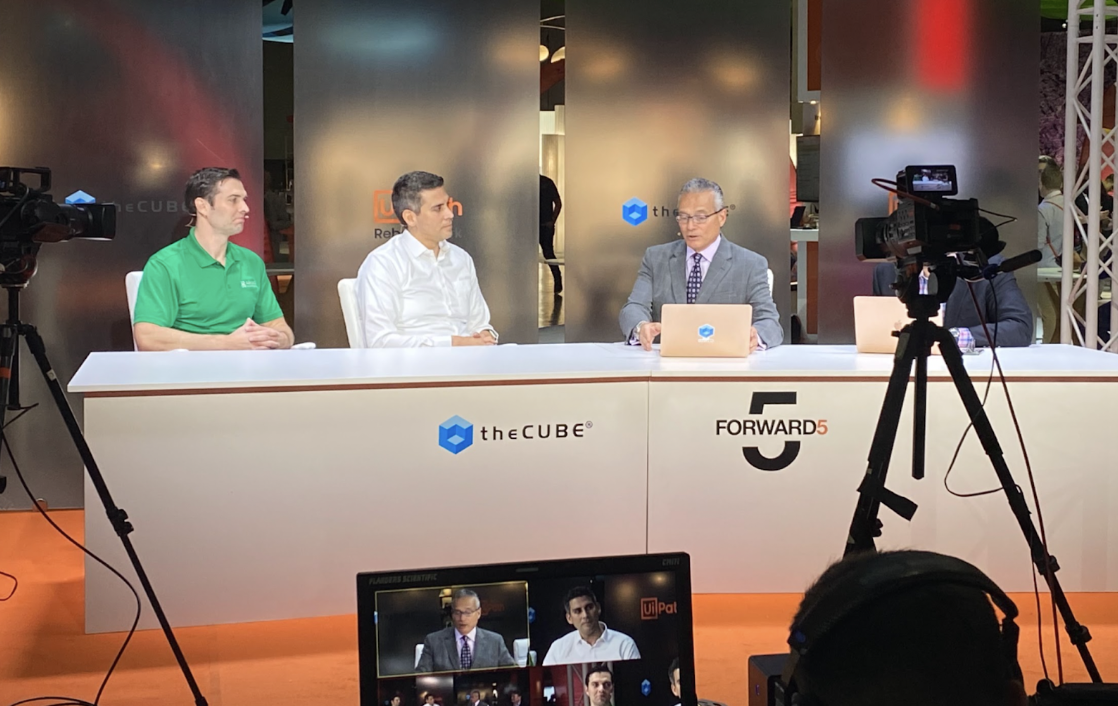UiPaths FORWARD 5 conference included many great conversations about the automation industry and its future. Intelligent automation and digital transformation are two concepts that have a tight bond. This was apparent as top industry thought leaders held discussions involving industry insights and impacts. Ashling Partner’s co-founder Marshall Sied and Dave Espinoza, director of transformation at Cushman & Wakefield, joined theCUBE, hosted by Dave Vellante and David Nicholson while at FORWARD 5. The conversation included discussions around automation trends, the impact of digital transformation, and what companies can gain from RPA (robotic process automation). You can watch the entire interview by clicking the video below.
To give you an idea of what the conversation included, check out some of the most exciting excerpts.
Cushman’s Transformation Path
Espinoza shared a bit about Cushman & Wakefield and why they have prioritized their digital transformation initiatives. “We had a lot of disparate processes, lots of paper, lots of processes not standardized. We’re trying to make sure that we continue to double down on continuous process improvement and bring lots of different types of technologies to bear that solve problems,” he commented.
Vellante asked if the pandemic was the catalyst for the acceleration or if it was a steady climb. Sied answered, “It was both. There was top-down executive support pre-pandemic, so they were moving. Cushman was prepared and had a foundation of governance. The pandemic put some kerosene on the fire for automation.”
While Cushman was on a digital transformation path, Espinoza noted that the UI platform enables processes across the organization like natural language processing, document understanding, and other automation applications. “We’re aligning ourselves to the strategy, making sure we’re doing it in smart ways, and empowering employees. It’s top-down and bottom-up; it’s very citizen-led throughout the organization.”
Ashling and Cushman Partner to Drive Outcomes and End-to-End Automation
The conversation next veered into how Ashling Partners worked with Cushman. Sied explained, “We started project-based and established the intelligent automation COE. We had a very outcome-driven, top-down approach.”
The engagement enabled more end-to-end automation experiences with more than just RPA. Over time, it matured into an agile DevOps methodology.
One of the most crucial points for Cushman and Ashling was to prove the ROI of automation every day. A long-term roadmap was critical to do this, and it needed to coincide with Cushman’s objectives. It’s the model in place today, referred to as Build-as-a-Service. “It’s plan, build, and then run,” Sied added.
On the numbers, Espinoza shared that each part of the transaction has a value associated with it. “We’re constantly monitoring the numbers and looking at performance. There’s very real value associated with maintaining business as usual for the 50-plus automations we have in production.”
With automation, there’s never a point where it’s one and done. Refining the approach is ongoing. Cushman started its automation evolution with teams based on service lines. Now, they have two teams—one to build and the other to enhance. “We’re constantly looking for and building new automations and looking for incremental value, making automations better, faster, and more resilient,” Espinoza stated.
Cushman has also felt the impact of the Great Resignation. “We’re all looking for the exact same talent, so we’re making sure we’re doing interesting work and valuing our people,” Espinoza said.
The UiPath Platform and Its Evolving Capabilities
Next, the panel discussed UiPath’s platform and its capabilities. While RPA is quantifiable, there are always exceptions that force organizations to look upstream. “You have to go upstream and have more automations. You need process discovery, process mining, and process gold. You have to understand the user experience interface to drive adoption,” Sied commented.
UiPath also has a new acquisition with Re:infer, which unlocks the power of conversational data using AI (artificial intelligence). Sied expressed, “The potential is huge. All the communication and structured and unstructured data organizations have. If you can figure out the right identifiers to trigger for your business, your business can be more effective and efficient.”
Espinoza also sees the potential possibilities. “The content and communication mining has the ability for us to pinpoint opportunities at levels we couldn’t possibly do before.”
Refining a Process
The group also talked through a process that Cushman applied automation to that drove excellent outcomes with continuous improvement and continuous delivery in talking about invoice processing. To automate and improve it, the organization used document understanding, optical character reading, and machine learning. “We always want to make it faster and better. We’re using this internally and for clients. It’s a big change for us.”
Watch the entire episode to hear more about where automation is going and how it solves business problems: Marshall Sied, Ashling Partners & Dave Espinoza, Cushman & Wakefield | UiPath Forward5 2022


